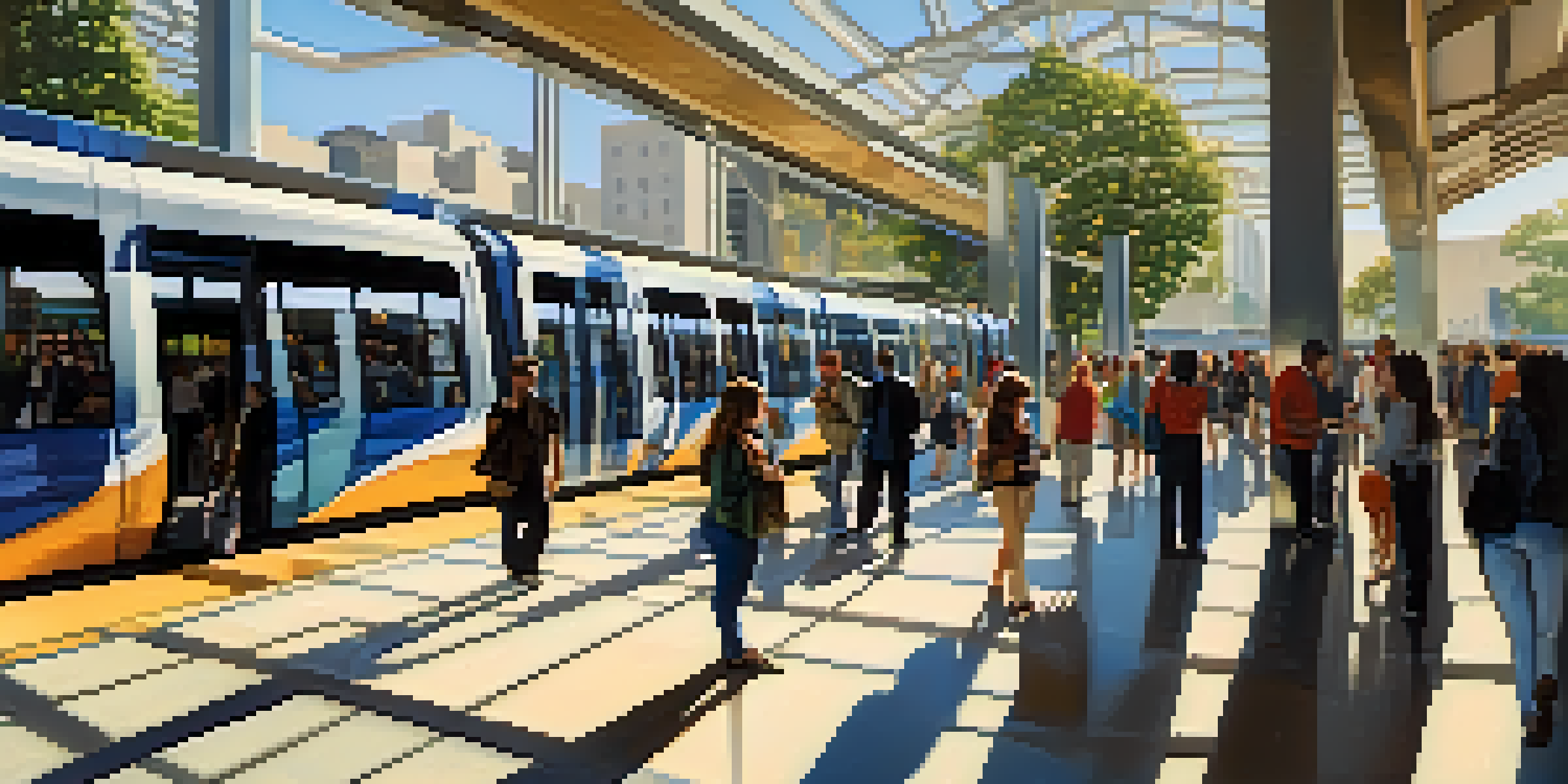Regional Collaboration: San Jose's Role in Bay Area Transit

Understanding the Bay Area's Transit Landscape
The Bay Area boasts a complex transit system that includes various modes of transportation, from buses to light rail. This interconnected web of services is vital for daily commuters and travelers alike. Understanding how these systems work together is essential for effective regional collaboration.
Public transport is the lifeblood of our cities, enabling us to connect, engage, and thrive.
San Jose, as the largest city in the Bay Area, plays a pivotal role in shaping this landscape. With its growing population and economic expansion, the demand for efficient transit options is more pressing than ever. This makes San Jose a key player in regional transit discussions.
By analyzing the current transit challenges, stakeholders can identify opportunities for collaboration. These challenges often include issues like traffic congestion and limited service areas, which require a united effort to tackle effectively.
San Jose's Leadership in Transit Initiatives
San Jose has taken the lead in several transit initiatives aimed at enhancing regional collaboration. One notable example is the VTA (Valley Transportation Authority), which provides essential transit services throughout Santa Clara County. By actively participating in regional planning, San Jose ensures that its needs are represented.

Moreover, the city has invested in innovative projects like the BART (Bay Area Rapid Transit) extension to Berryessa. This not only improves local access but also connects San Jose to other major hubs in the Bay Area, promoting seamless travel across the region.
San Jose Leads Regional Transit Efforts
San Jose is at the forefront of transit initiatives, fostering collaboration and enhancing connections within the Bay Area.
These efforts highlight San Jose's commitment to fostering a collaborative transit environment. By leading by example, the city encourages neighboring municipalities to engage in similar initiatives, creating a more cohesive transit fabric for all.
The Role of Technology in Transit Collaboration
Technology plays a crucial role in enhancing collaboration among Bay Area transit systems. San Jose embraces smart transit solutions, such as real-time tracking tools and mobile apps, to improve user experience. These innovations not only streamline operations but also foster communication between various agencies.
The future of transportation is not just about technology, but about collaboration and community engagement.
For example, the integration of different transit schedules through technology allows commuters to plan their journeys more efficiently. When riders can easily access information about multiple transit options, it encourages them to explore alternative routes and modes of transport.
Ultimately, technology serves as a bridge that connects various transit systems. By leveraging these digital solutions, San Jose can enhance regional collaboration, making traveling throughout the Bay Area more convenient and efficient for everyone.
Community Engagement in Transit Planning
Community engagement is a cornerstone of effective transit planning in San Jose. The city actively seeks input from residents to understand their needs and preferences regarding public transportation. By hosting workshops and surveys, San Jose ensures that transit solutions reflect the voices of its community members.
This collaborative approach not only builds trust but also fosters a sense of ownership among residents. When individuals feel heard, they are more likely to support transit initiatives and use the services offered. This grassroots involvement is essential for the long-term success of transit systems.
Community Input Shapes Transit Solutions
Engaging residents in transit planning allows San Jose to create services that reflect the needs and preferences of its community.
Furthermore, engaging the community helps identify potential barriers to transit use. By addressing these concerns, San Jose can create a more inclusive transit environment that meets the diverse needs of its population.
Partnerships with Neighboring Cities
San Jose's collaboration extends beyond its borders, as it actively partners with neighboring cities in the Bay Area. These partnerships are crucial for creating a unified transit network that benefits all residents. Working together allows cities to share resources, expertise, and best practices.
One example of this collaboration is the joint efforts in developing express bus routes that connect various municipalities. These routes not only reduce travel times but also encourage more people to rely on public transportation, easing road congestion.
Such partnerships demonstrate the importance of regional thinking in transit planning. By focusing on collective goals, cities can create a more efficient and effective transit system that serves the entire Bay Area.
Funding and Resource Allocation for Transit Projects
Funding is a critical aspect of any transit initiative, and San Jose plays a significant role in securing resources for regional projects. The city actively pursues federal and state grants to enhance its transit offerings and improve infrastructure. This proactive approach ensures that San Jose remains at the forefront of transit innovation.
Moreover, by collaborating with other cities on funding initiatives, San Jose can maximize available resources. Pooling financial support for joint projects increases the likelihood of success and allows for more extensive improvements across the Bay Area.
Technology Enhances Transit Collaboration
Smart transit solutions and real-time tracking tools are crucial for improving communication and efficiency across Bay Area transit systems.
Effective resource allocation is essential for sustaining transit systems. By strategically investing in projects that benefit multiple jurisdictions, San Jose helps ensure that the entire region can enjoy improved transit options for years to come.
Future Directions for Bay Area Transit Collaboration
As the Bay Area continues to grow and evolve, so too must its transit systems. San Jose is poised to play a central role in shaping the future of regional transit collaboration. Embracing emerging technologies and innovative strategies will be key to meeting changing transportation needs.
Looking ahead, the city aims to expand its partnerships and enhance communication between transit agencies. By fostering a culture of collaboration, San Jose can work towards a more integrated transit system that meets the needs of all residents.

Ultimately, the future of Bay Area transit collaboration hinges on the collective efforts of all stakeholders. With San Jose leading the charge, there is great potential for creating a transit network that is efficient, accessible, and sustainable for everyone.